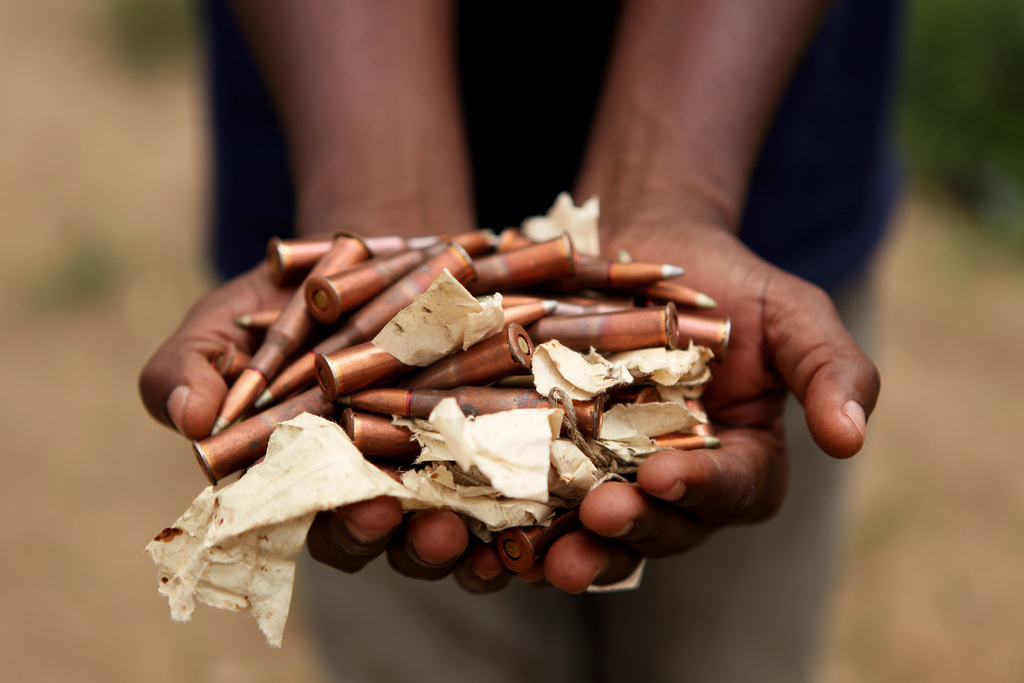By: Dustin Johnson
Header photo credit: UN Photo/Patricia Esteve
The image most commonly brought to mind by the phrase child soldier is that of a boy holding an AK-47 assault rifle. While not every child soldiers carry a gun, the availability of small arms and light weapons has helped precipitate the security concern child soldiers pose.
The importance of small arms to the use of child soldiers has always been acknowledged by campaigners and the UN, who point out that modern assault rifles are simple, cheap, and relatively light. A child can learn to operate and maintain them in under an hour proficiently. Consequently, a child can quickly mobilise into a capable fighter. However, small arms have traditionally been ignored by the international arms control regime, with its focus on heavy weaponry, aircraft, missiles, and weapons of mass destruction.
A recent report from Terre Des Hommes Germany and three other German NGOs highlights how small arms and light weapons produced by German companies end up in the hands of child soldiers in multiple countries. Pathways include the supply of arms to unstable countries where they are later diverted to paramilitary groups, or looted by armed groups, using child soldiers. German guns, built under license in secondary states, can be exported to third countries where they fall into the hands of child soldiers. Loopholes in arms control legislation and the government placing other factors ahead of child soldiers in the decision to grant export licenses. While the longevity of firearms, with German-made guns from as early as the Second World War still being used in conflicts worldwide.
The issue of small arms and light weapons are certainly not a purely German problem though. Many countries make and export small arms around the world, and some governments directly supply foreign armed groups despite the use of child soldiers. Weapons from countries such as the US, China, Iran, and Sudan end up in the hands of armed groups that use child soldiers around the world, whether as the result of intentionally supplying them, or their diversion by corrupt officials or their looting from government caches. The complex interaction of the legal arms trade, illegal arms trafficking, and insecurity and corruption too often leads to weapons intended for legitimate state security forces ending up in the hands of children.
The report puts forwards three key recommendations, which are relevant to all countries engaged in the manufacture and trade of small arms, light weapons, their components and ammunition:
- Make national arms export requirements more restrictive, and not let strategic or economic interests override child protection when it comes to their implementation;
- Restrict military training and aid for armed forces that use child soldiers; and
- Push for the implementation of better international treaties and safeguards on the arms trade, such as the Arms Trade Treaty.
Preventing the use of child soldiers requires a multifaceted approach, and this report highlights important steps that national governments can take to reduce the access to weapons for armed groups and forces that use child soldiers.
Use the shareable below on your social media to share this story.

